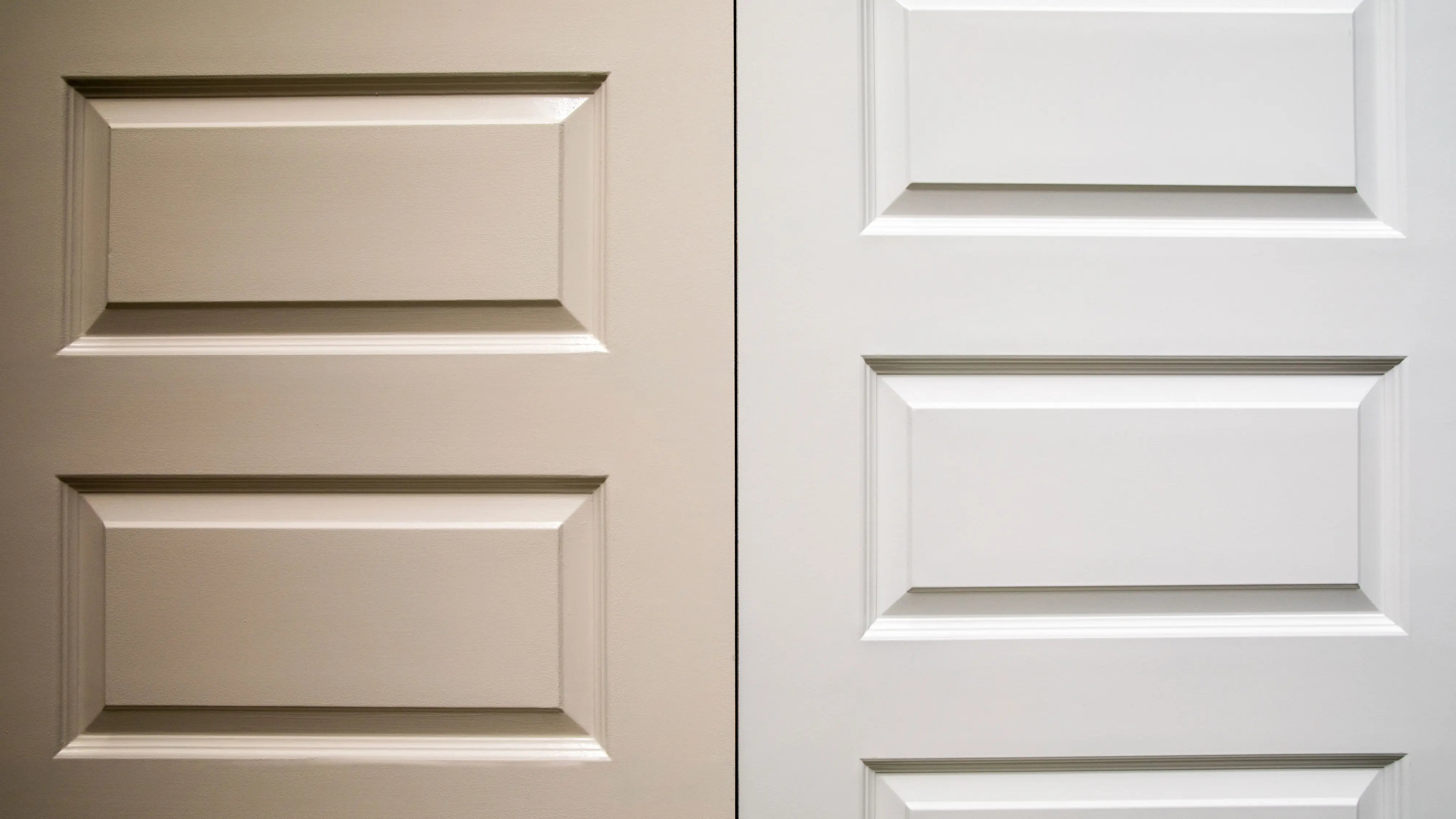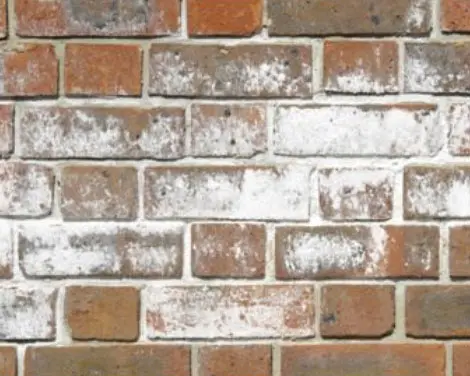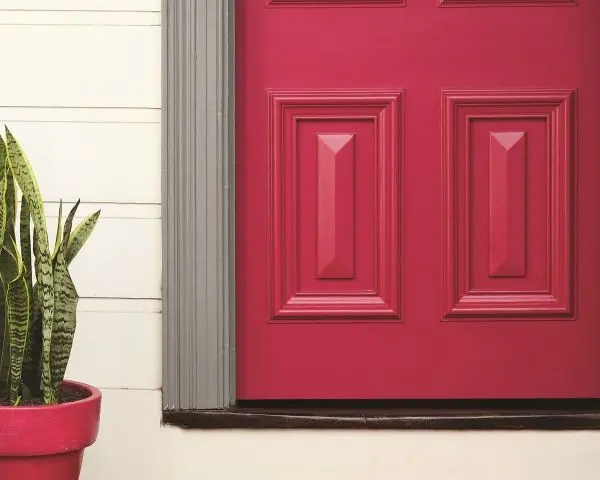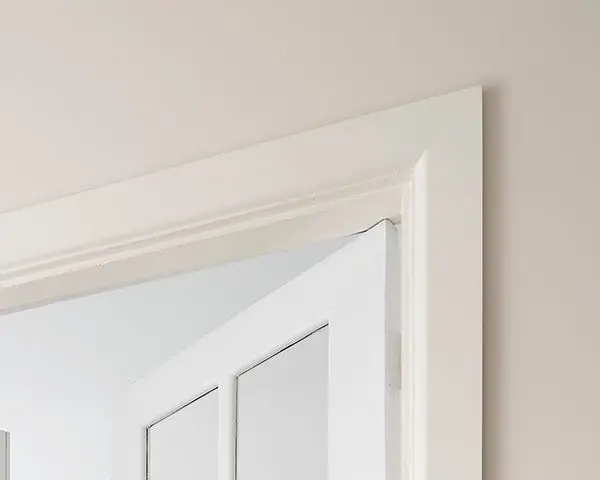Yellowing of enamels

What is yellowing?
“Yellowing” is the term most commonly used to describe the discoloration effect that occurs naturally on ageing, when an alkyd (oil-based) enamel paint is used indoors. It is most noticeable in situations where the natural lighting is poor, for example sliding cavity doors, inside door jambs, behind furniture or inside cupboards.
The “yellowing” phenomenon is an industry-wide technology characteristic that is prevalent in all paint manufacturers of oil-based enamel paints and is not restricted to any one individual product or brand.
Why?
Paint “yellowing” on ageing is a widely known and well documented characteristic property of alkyd (oil-based) enamels and is most noticeable in the dried films of pale-coloured or white pigmented oil-based enamel paints or clear varnishes.
It has been extensively researched and is known to be due to the presence of chromophores (coloured chemicals) that are formed during the paints drying process. These chromophores are sensitive to light and will be bleached out of the paint film if exposed to daylight. Some alkyd enamel paints discolour more than others depending on the type of vegetable oil blend (eg. safflower, sunflower, soya oil, etc) that is present in the formulation. However, all alkyd enamel paints can be expected to develop a yellow tinge/tone as time passes, especially in the absence of daylight.
Solution
Unfortunately, the “yellowing” effect is irreversible and the colour can often be irregular or patchy in appearance.
To minimise the “yellowing” effect during the drying process, all conventional water-based prep-coats and topcoats should be applied first and allowed to cure for up to two weeks (longer if cold) prior to the commencement of the enamel work (or vice-versa).
Good ventilation, with the aid of fans, during application and during the drying period for all water-based paints will allow ammonia vapours (if present) to escape more quickly.
As an alternative to conventional water-based paints, low VOC water-based paints that usually do not contain ammonia can be employed.
The only effective way to overcome the “yellowing” problem, once it has occurred, is to allow the enamel paint to harden and lightly sand to remove the gloss prior to repainting with a non-yellowing water-based coating system, over the alkyd enamel.
Prevention
In order to prevent this problem, it is recommended to avoid applying white or light coloured enamel or alkyd paints in presence of water-based paints at the same time, because it can adversely and permanently affect the colour of the alkyd enamel.
Allow as much natural light as possible into the painting area both during and after application on enamels. Rooms that remain closed-up until the occupant moves in are very susceptible to early "yellowing", due to the lack of ventilation and lack of daylight.
When a completely non-yellowing enamel finish is required, a premium quality water-based enamel paint system, such as Dulux Aquanamel®, or a water-based non-yellowing clear coating for timber such as Intergrain® UltraClear™, should be employed.
Unlike oil-based enamels, most water-based acrylic latex paints such as Dulux Wash&Wear®, Aquanamel® for interior or Weathershield® for exterior, will not “yellow” over time.
When painting doors, better results can be achieved by removing them for painting and allowing them to dry in good daylight. Doors requiring a “mirror-like” finish are typically sprayed using a non-yellowing two-pack polyurethane solvent-based coating system, such as Dulux Luxathane® R or Dulux Quantum® FX, in place of oil-based enamels.
References
A more detailed explanation and recommended processes can be found in the Australian Standard AS/NZS 2311 “The Painting of Buildings” Sections 6.6 and 7.6(H).
Further information on the “Yellowing of Enamels” can also be obtained through the Australian Paint Manufacturers Federation (APMF). Phone: (02) 9922-3955 or Email: office@apmf.asn.au
More paint problem solutions
Efflorescence is the deposit of crusty white mineral salts that appear on a masonry surface such as concrete, render, brick or mortar.
Discover how to touch up a small area of a newly painted surface to conceal repairs to minor damage or to cover up small surface defects.
Discover the differences between water-based and oil-based enamel paints.
All water-based paints undergo a “drying process” involving two distinct phases, evaporation and coalescence.
Find out everything you need to know about paint yellowing of enamels by downloading the Dulux technical advice brochure.
Get detailed information about the physical and chemical properties of our products.
Advice for those challenges that arise in your busy and varied days
Access product datasheets, specifications, substrates, substrate preparations, safety datasheets (SDS) and create a project specification from the ground up.



